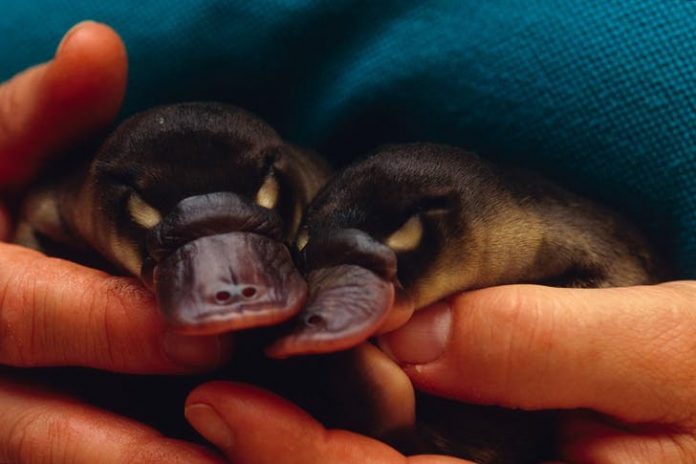Adorable platypus could face extinction unless national research is carried out, expert warns.
The platypus is predominantly found along the Great Dividing Range, in parts of Tasmania, across the eastern seaboard and in an isolated pocket of South Australia.
It can also be found close to major population centres such as in the Yarra River, just 10 kilometres from Melbourne’s CBD.
In 2014 the International Union for Conservation of Nature (IUCN) raised the status of the platypus from least concerned to near-threatened.
But Centre for Environmental Stress and Adaptation Research (CESAR) senior ecologist Josh Griffiths said no-one really knew for sure how many platypuses there were in the wild.
“The problem is no-one’s really looking,” Mr Griffiths said.
“And that’s one of the real issues with platypus conservation — there is no reliable way of estimating platypus numbers, even at a local scale.
Getting accurate numbers is difficult
Mr Griffiths said studying the monotreme through traditional catch-and-release methods had proven ineffective.
“Partly because you don’t catch many of them, but also once you have caught them they seem to avoid the nets, so it’s very hard to catch them again, and it means you can’t get an accurate estimate of numbers.”
He said while he was fairly certain there were tens of thousands of platypuses in Australian waterways, the number could be as high as 100,000 or as low as 20,000.
“We don’t know if there’s half as many as there were 200 years ago, [or] a 10th of what there was 200 years ago. They could have increased for all we know,” he said.
Australian Platypus Conservancy biologist Geoff Williams said habitat destruction, climate change, predation and direct human contact were the main threats to the platypus.
This year, nine platypuses died in Victorian waterways after drowning in illegal enclosed yabby nets, the second-worst year since records began in 2010.
But Mr Williams said the actual number of deaths could be considerably higher.
“The vast majority of [platypus] mortalities do not get reported [because] most people are using them [the nets] illegally.”
Mr Williams questioned figures from Victoria’s Department of Environment, Land, Water and Planning estimating that only 5 per cent of platypus deaths were reported.
“The real number could be perhaps 1 per cent for all we know,” he said.
“Consequently it’s only if somebody accidentally discovers a net and has a look in it and finds a dead animal that we tend to get reports.
“The reason the numbers tend to be higher in Victoria probably doesn’t reflect the fact the problem is any worse — it simply reflects the fact that Victoria has a better system for keeping track of these things.”
CESAR has just launched a three-year national survey of platypus numbers in partnership with the University of Melbourne and the San Diego Zoo in the United States.
Mr Griffiths said the survey would take in Victoria and New South Wales, and move away from catch-and-release methods to a DNA sampling approach.
“We can now go and take water samples and look for traces of DNA,” he said.
“And that enables us to do this large-scale research over about 1,000 sites … and that’s never been able to be conducted before.
“It’ll be looking at places where we know they used to be 20 or 50 years ago — are they still there now?”








